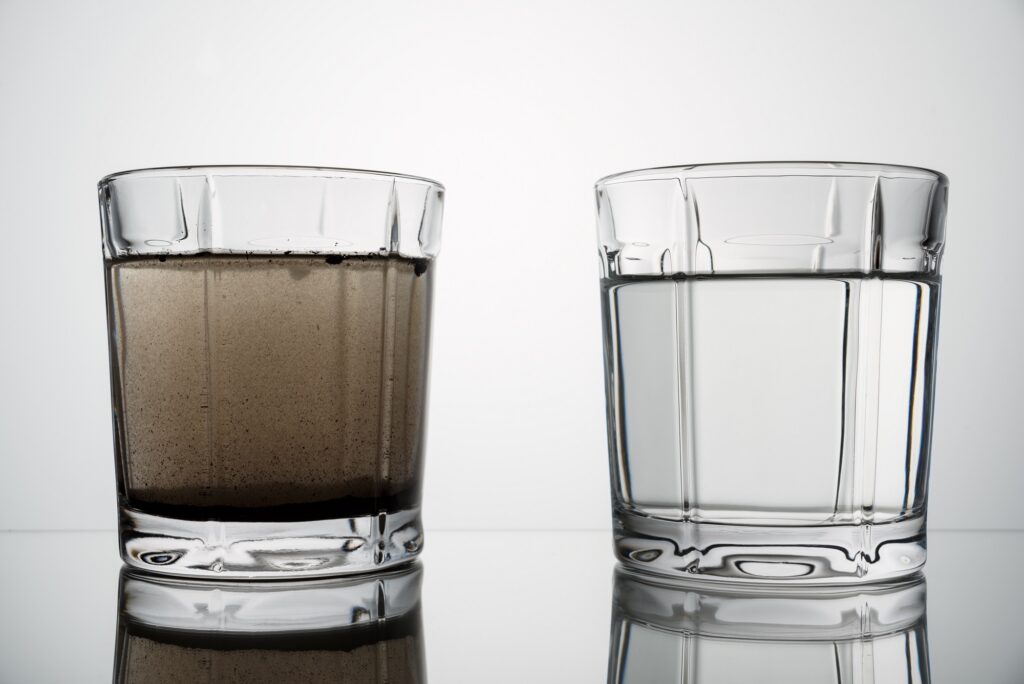
Understanding Manganese in Drinking Water: Risks, Effects, and Solutions
Manganese is a naturally occurring mineral found in the earth’s crust, and it’s also present in various foods, drinking water, and soil. In small amounts, manganese is essential for human health, as it plays a role in bone formation, blood clotting, and brain function. However, when manganese is present in excess, especially in drinking water, it can pose serious health risks, particularly for infants and young children.
At American Aqua, we believe it’s important to raise awareness about the potential dangers of manganese in water and provide solutions to protect your family’s health. In this blog post, we’ll explore the risks associated with manganese exposure, why it matters, and how you can ensure your drinking water is safe.
How Does Manganese Get Into Drinking Water?
Manganese typically enters drinking water through the erosion of rocks containing the mineral, as well as from industrial and agricultural activities. Private wells, especially those located in areas with high levels of naturally occurring manganese in the soil, are more likely to have elevated concentrations of this mineral in their water. Public water systems may also have manganese, although most municipalities treat water to remove certain contaminants before distribution.
Interestingly, manganese is often undetectable by taste, color, or odor in water. However, when levels exceed certain thresholds, it can cause water to take on a rust-like color or even stain laundry, plumbing fixtures, and appliances. In addition to the aesthetic issues, high manganese concentrations can make the water taste metallic, further discouraging consumption.
Health Risks Associated with Manganese Exposure
The primary health concerns related to manganese exposure revolve around its effects on the brain and nervous system. In adults, long-term exposure to high levels of manganese, particularly in industrial settings where the mineral is inhaled, has been linked to neurological symptoms resembling Parkinson’s disease. Workers exposed to manganese dust for prolonged periods have reported symptoms such as weakness, tremors, and cognitive decline.
However, the risks for children are even more concerning. Growing research suggests that manganese exposure during pregnancy and childhood can impair cognitive development, including memory, learning ability, and behavior. Some studies have shown a direct link between high manganese levels in drinking water and lower IQ scores, hyperactivity, and attention problems in children.
The Icahn School of Medicine at Mount Sinai in New York conducted a review of several studies and found that 12 out of 14 studies linked manganese exposure to poor mental development. Moreover, a study in Canada found that children with the highest levels of manganese in their hair samples had IQ scores significantly lower than those with the lowest levels. These findings suggest that even small amounts of manganese in drinking water may have a measurable impact on a child’s cognitive function.
One of the key reasons why children are at higher risk is that they absorb and retain manganese more readily than adults. In fact, a growing body of evidence indicates that manganese from drinking water is more easily absorbed by the body than manganese from food, even though food is generally a larger source of the mineral.
What Are the Safe Levels of Manganese?
While some manganese is necessary for good health, it’s crucial to avoid excessive exposure. According to the Environmental Working Group (EWG, the recommended safe limit for manganese in drinking water for infants who are formula-fed is 50 ppb. For children and adults, the EPA’s health reference level suggests no more than 300 ppb. However, even manganese levels lower than 100 ppb may still pose risks to children’s cognitive development.
To minimize the potential risks, it’s important to monitor manganese levels in your water and take action if necessary. If you are pregnant, have a young child, or are concerned about the quality of your water, it’s a good idea to test for manganese.
How to Protect Your Family from Excess Manganese
If you’re concerned about manganese in your drinking water, here are some steps you can take to ensure your family’s safety:
- Test Your Water: Testing is especially important if you notice any rust-colored stains or if your water has a metallic taste. American Aqua offers water testing services and can test any home’s water supply in Southeast Michigan.
- Install a Filtration System: Reverse osmosis systems are the most reliable method for removing manganese from drinking water. These systems can effectively reduce contaminants like manganese, ensuring the water you drink is safe.
- Follow Local Guidelines: If you live in an area where manganese is a known issue, make sure to follow local recommendations for safe drinking water levels.
- Consult with Your Water Company: If you’re on a public water system, contact your local water provider to inquire about manganese levels. They can provide information about the water’s composition and whether any treatment is in place.
Conclusion
While manganese is an essential mineral in small amounts, excessive exposure — especially through drinking water — can have serious health consequences, particularly for young children and pregnant women. At American Aqua, we’re committed to providing solutions that protect families from harmful contaminants like manganese. Testing your water, installing an appropriate filtration system, and staying informed about local water quality standards are key steps in safeguarding your health. Don’t wait until problems arise — take proactive steps to ensure your water is clean, safe, and healthy for your family.
For more information on water filtration solutions, or to schedule a consultation, contact American Aqua today!